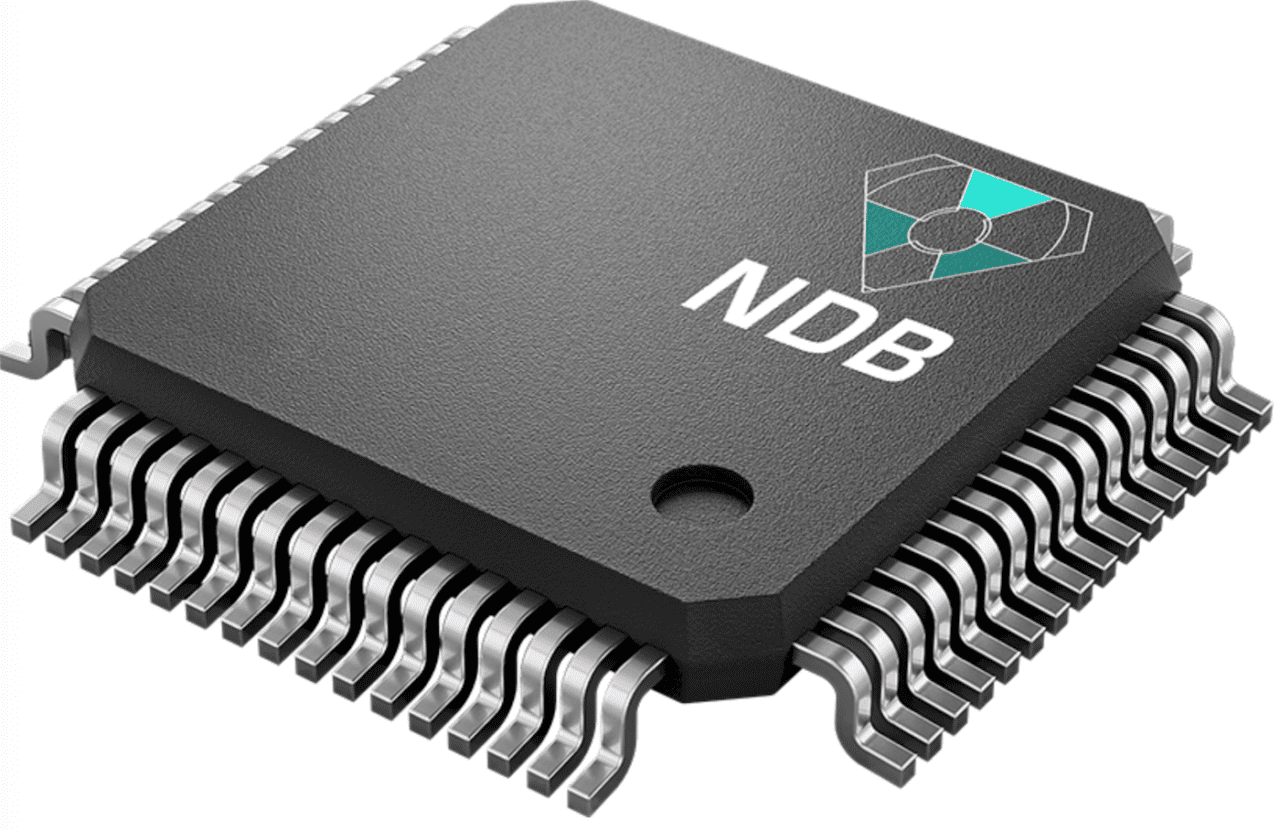
NDB Inc. is developing a prototype of a self charging diamond battery that the green energy startup claims capable of self charging for up to 28,000 years. (NDB Inc.)
Two breakthrough proof of concept demonstrations of a disruptive new self-charging diamond battery powered by nuclear radioactive waste has Pleasanton, California-based green energy startup NDB Inc. poised to disrupt the future concept of power within aerospace applications.
NDB Inc. CEO Dr. Nima Golsharifi told Avionics International that research and development of the first ever nano diamond battery (NDB) began seven years ago, and their focus has now shifted to developing commercialized versions of the device across various applications beyond aerospace. Their first two beta customers include a “leader in nuclear fuel cycle products and services and a leading global aerospace, defense and security manufacturing company,” according to an Aug. 25 press release.
“As we move forward, the biggest limiter for anything involving electronics is power or energy,” Golsharifi said during a Zoom call from London.
Using a proprietary concept that features multiple layers of synthetic diamond, the battery’s power source comes from the manipulation of energy stored within nuclear radioactive graphite. Inside the graphite is what is known as Carbon-14, a beta ray emitting carbon radio isotope that turns into nitrogen and anti neutrino and an energetic electron, according to the company’s YouTube explainer video.
NDB’s synthetic diamond, which also contains carbon, both shields the C-14 graphite and then absorbs the C-14’s energetic electrons –as many as 3,600 on average – to self-generate electricity for as much up to 28,000 years. The startup summarizes the diamond battery as effectively “bleeding electricity from recycled waste.”
Vadym Mochalin, Associate Professor, Department of Chemistry, Missouri University of Science & Technology said the NDB’s “battery life completely eliminates the need for charging and replacing batteries.”
“By reducing the required mass, size, and cost of devices through its small battery footprint, NDB’s innovative use of diamond as the active material in its technology will enable devices to operate completely independently of external energy sources,” Mochalin said in a statement.

Where the self-charging battery gets its power from. (NDB Inc.)
In both recent proof-of-concept demonstrations, the battery achieved a “40 percent charge, which is a significant improvement over commercial diamonds, which have a 15 percent charge collection efficiency.” The startup, which became incorporated last year,is an Alchemist Accelerator company, a California-based venture-backed accelerator that focuses on companies that sell business-to-business products.
Among some of the initial applications outlined by NDB include power for drones, cameras, sensors and scaling all the way up to spacecraft and rockets for use as both primary and backup sources of power.
“I can say comfortably today that based on the design and tests we have done so far that we can eventually meet the safety certification tests for most major aerospace applications. However, it will take some time to get to that point for aviation, as with any industry, needs to become comfortable with the new technology before it is adopted,” Golsharifi said.
Both proof-of-concept tests were led by University of Cambridge physicist Sir Michael Pepper. The NDB team also includes former Chief Engineer for Rolls-Royce Professor Darrell Mann. Golsharifi said a team of legal experts that are also currently reviewing safety certification design requirements and tests across a range of different industries, including aerospace.

NDBs proprietary concept scatters the energetic electrons generated by the nuclear graphite, the electrons are then absorbed by the non-radioactive synthetic diamond to generate electricity. (NDB Inc.)
The timeline for powering an aircraft using a nano diamond batter is longer than other potential near-term applications it could support within drones, the CEO said.
“What our team is envisioning right now, is that if we do want to get into the aviation industry on the aircraft power side it would take a minimum of 7 to 8 years to achieve that. If you also think about things like drones or unmanned vehicles, as those become more popular in that time frame they could also be powered by this device. But on the larger scale airframes, it will take longer,” Golsharifi said.
The battery is also climate-independent and only requires open air to work, according to the company. NDB claims it will be able to produce the self-charging battery across any size or form of battery that is commonly used today in both consumer and industry applications. Developing commercial versions of the device requires the use of plasma enhanced techniques such as chemical vapor deposition, a technique that is used to make computer chips and other nano devices by growing them atomically layer by layer.
Neel Naicker, chief strategy officer for NDB said that the company is being extremely selective in developing initial industry applications for the battery.
“We have been very selective in terms of introducing something that will be game-changing for the industry, so we’ve been very selective and speaking with certain clients early on to develop a prototype partner. As you would imagine, the reason for the selectiveness is that we know this breakthrough will become extremely disruptive to many different industries,” Naicker said.
Development of the first NDB commercial prototype battery is currently underway and is expected to become available later this year.